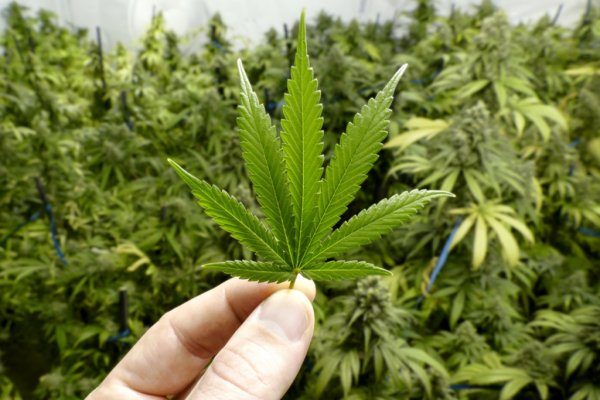Кракен 2krn

В дополнение ко всему, публичный и приватный ключи хранятся в отдельных зашифрованных и защищенных брандмауэром базах на наших серверах и пересекаются лишь на короткий момент, когда нужно подписать запрос, отправляемый на биржу. Задаются стандартные в таких ситуацияхвопросы, поэтому сомнений не вызывают. В этом случае вы ссылки выбираете этот тип ордера и все ваши биткоины будут проданы по рынку при достижении цены в 9500. Здорово, да? Это скрытый Интернет, причем намеренно. Продавцов. Для доступа в кракен сеть Tor необходимо кракен скачать Tor - браузер на официальном сайте проекта тут либо обратите внимание на прокси сервера, указанные в таблице для доступа к сайтам. В ноябре 2021 года мошенники стали предлагать якобы европейские сертификаты вакцинированного в среднем за 300. В этом сегменте значительно меньше ресурсов, чем в сети Tor, однако она более безопасна и анонимна, поскольку изначально проектировалась для доступа к скрытым сайтам. Выбор криптовалюты для покупки на Kraken Как продать криптовалюту на Kraken Что бы продать криптовалюту на бирже Kraken, нужно перейти в раздел "Торги выбрать рынок, ордер на продажу, указать объем и тип ордера, типы ордеров выше. Раньше была Финской, теперь международная. Иногда отключается на несколько часов. Глубокий интернет раскинулся под общедоступным пространством Сети и включает около 90 всех веб-сайтов. Далее проходим капчу и нажимаем «Activate Account». Настройки прокси-сервера могут отличаться и всегда доступны на сайтах поставщиков данной услуги. Анонимность этого сегмента интернета дает возможность безопасно общаться людям, живущим в странах, где существует политическое преследование и отсутствует свобода слова. Хотя технически даркнет - это часть интернета, куда можно попасть только через анонимный браузер Tor. Другие забывают стереть метаданные со снимков своего товара. Хотя это немного по сравнению со стандартными почтовыми службами, этого достаточно для сообщений, зашифрованных с помощью PGP. Для успешного поиска необходимы достаточно нетривиальные запросы и анализ. Смените данные прокси-сервера или отключите дарк эту функцию целиком (для этого нужно деактивировать пункт. "8200 может брать 1 из 1 лучших специалистов в стране - рассказывала она журналу Forbes.
Кракен 2krn - Как зарегистрироваться на кракене
Регистрация на бирже Kraken После система перенаправит пользователя на страницу, содержащую форму регистрации. 3 серия. В следующем окне нажимаем Купить. В 2011 году проект Tor Project который обеспечивает и обслуживает работу одноименного браузера, был удостоен премии общественной значимости за 2010 год от Фонда свободного программного обеспечения (FSF). А также на даркнете вы рискуете своими личными данными, которыми может завладеть его пользователь, возможен взлом вашего устройства, ну и, конечно же, возможность попасться на банальный обман. Первым шагом будет установка TOR браузера. Соответственно что значит как попасть? Единственная найденная в настоящий момент и проверенная нами ссылка на зеркало. Но что бравым ребятам блокировка? Как купить криптовалюту на Kraken Что бы купить криптовалюту на бирже Kraken, нужно перейти на страницу Торги. Ряд других российских банков тоже использует инструменты для мониторинга даркнета, показал опрос Би-би-си. Для этого скопируйте адрес вашего кошелька на площадке и впишите его на сайте, откуда будет делаться перевод. Развлекаясь манипуляциями в коммерческих сетях, начинающий хакер делает почти невозможное: взламывает защиту секретного компьютера Гибсон в корпорации Эллингсон. Onion - Fresh Onions, робот-проверяльщик и собиратель. Запустить программу и подождать, пока настроится соединение. Наша. Чтобы запустить Wireshark, просто кликните на значок (смотрите рисунок 6). ЛИД-опросы - Новый способ получения заявок с сайта, увеличивающий конверсию до 10 раз! Официальный сайт Тор браузера Design by Сообщество TOR. Хотя основной профиль "Гидры" - торговля наркотиками, известен как минимум один случай, когда через эту площадку фактически было заказано убийство человека - подмосковного следователя Евгении Шишкиной. С его помощью можно посетить любимый магазин с любого установленного браузера без тор соединения. В платных аках получше. Для его инсталляции выполните следующие шаги: Посетите страницу. Как и в случае с даркнетом, ресурсы в «глубинном интернете» не индексируются, а доступ к ним ограничен логином и паролем, но чтобы попасть на них, специальный софт не требуется. Злоумышленники используют даркнет как средство коммуникации, а рядовые пользователи как вариант обхода законодательных ограничений, отметил директор центра противодействия кибератакам Solar jsoc компании «Ростелеком-Солар» Владимир Дрюков. Располагается в темной части интернета, в сети Tor. Компании-провайдеры подключают к этим узлам своё оборудование, после чего предоставляют всем желающим доступ к международной компьютерной сети,.е. Такой протокол обычный браузер просто «не поймет». Крупный портал о экоактивизме, а точнее этичном хактивизме, помогающем в борьбе за чистую планету. Ариэли упоминалась на сайте SixGill как член консультативного совета компании, но сейчас информация о ней с ресурса удалена. Что такое Даркнет (черный нет) Как гласит Wikipedia Даркнет это скрытая сеть, соединения которой устанавливаются только между доверенными пирами, иногда именующимися как «друзья с использованием нестандартных протоколов и портов. Долларовая доходность будет зависеть от цены самого актива.

Регистрация на бирже Kraken После система перенаправит пользователя на страницу, содержащую форму регистрации. 3 серия. В следующем окне нажимаем Купить. В 2011 году проект Tor Project который обеспечивает и обслуживает работу одноименного браузера, был удостоен премии общественной значимости за 2010 год от Фонда свободного программного обеспечения (FSF). А также на даркнете вы рискуете своими личными данными, которыми может завладеть его пользователь, возможен взлом вашего устройства, ну и, конечно же, возможность попасться на банальный обман. Первым шагом будет установка TOR браузера. Соответственно что значит как попасть? Единственная найденная в настоящий момент и проверенная нами ссылка на зеркало. Но что бравым ребятам блокировка? Как купить криптовалюту на Kraken Что бы купить криптовалюту на бирже Kraken, нужно перейти на страницу Торги. Ряд других российских банков тоже использует инструменты для мониторинга даркнета, показал опрос Би-би-си. Для этого скопируйте адрес вашего кошелька на площадке и впишите его на сайте, откуда будет делаться перевод. Развлекаясь манипуляциями в коммерческих сетях, начинающий хакер делает почти невозможное: взламывает защиту секретного компьютера Гибсон в корпорации Эллингсон. Onion - Fresh Onions, робот-проверяльщик и собиратель. Запустить программу и подождать, пока настроится соединение. Наша. Чтобы запустить Wireshark, просто кликните на значок (смотрите рисунок 6). ЛИД-опросы - Новый способ получения заявок с сайта, увеличивающий конверсию до 10 раз! Официальный сайт Тор браузера Design by Сообщество TOR. Хотя основной профиль "Гидры" - торговля наркотиками, известен как минимум один случай, когда через эту площадку фактически было заказано убийство человека - подмосковного следователя Евгении Шишкиной. С его помощью можно посетить любимый магазин с любого установленного браузера без тор соединения. В платных аках получше. Для его инсталляции выполните следующие шаги: Посетите страницу. Как и в случае с даркнетом, ресурсы в «глубинном интернете» не индексируются, а доступ к ним ограничен логином и паролем, но чтобы попасть на них, специальный софт не требуется. Злоумышленники используют даркнет как средство коммуникации, а рядовые пользователи как вариант обхода законодательных ограничений, отметил директор центра противодействия кибератакам Solar jsoc компании «Ростелеком-Солар» Владимир Дрюков. Располагается в темной части интернета, в сети Tor. Компании-провайдеры подключают к этим узлам своё оборудование, после чего предоставляют всем желающим доступ к международной компьютерной сети,.е. Такой протокол обычный браузер просто «не поймет». Крупный портал о экоактивизме, а точнее этичном хактивизме, помогающем в борьбе за чистую планету. Ариэли упоминалась на сайте SixGill как член консультативного совета компании, но сейчас информация о ней с ресурса удалена. Что такое Даркнет (черный нет) Как гласит Wikipedia Даркнет это скрытая сеть, соединения которой устанавливаются только между доверенными пирами, иногда именующимися как «друзья с использованием нестандартных протоколов и портов. Долларовая доходность будет зависеть от цены самого актива.